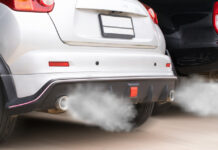Diesel particulate filter (DPF), which can be found in Euro 4 and Euro 5 vehicles, has been designed to meet emission standards.
The filter is similar to a honeycomb in its structure and traps harmful particles in the exhaust. The filter’s level of particles can build up over time, which can lead to clogging. The diesel particulate filter’s pressure sensor measures the amount of soot residue. Once the necessary conditions are met and the critical soot level has been detected, the regeneration process starts.
Sometimes, the vehicle is unable to perform the regeneration process. In these cases the soot will cause the engine to stop working efficiently. In these cases, the DPF marking may be visible on the display. When this warning is seen, the vehicle should be used at constant speed and high speed for a certain period of time (see Owner's Manual). This can be done in automatic vehicles by shifting the gear lever to the manual position. The engine management system will send more fuel to the engine and increase the exhaust temperature as the vehicle gets used at higher revs. When the exhaust temperature reaches approximately 600 °C, the regeneration process begins and the solid particles are burned and turned into soot. Sometimes, the process may not work. If this happens, you should take your vehicle to the service. A fault detection device should also be used to assist in the regeneration process.
The following are the most common reasons DPF clogs:
If the proper precautions are not taken, the DPF, which is found in all new diesel vehicles, might become uncleanable even during the regeneration process.

















